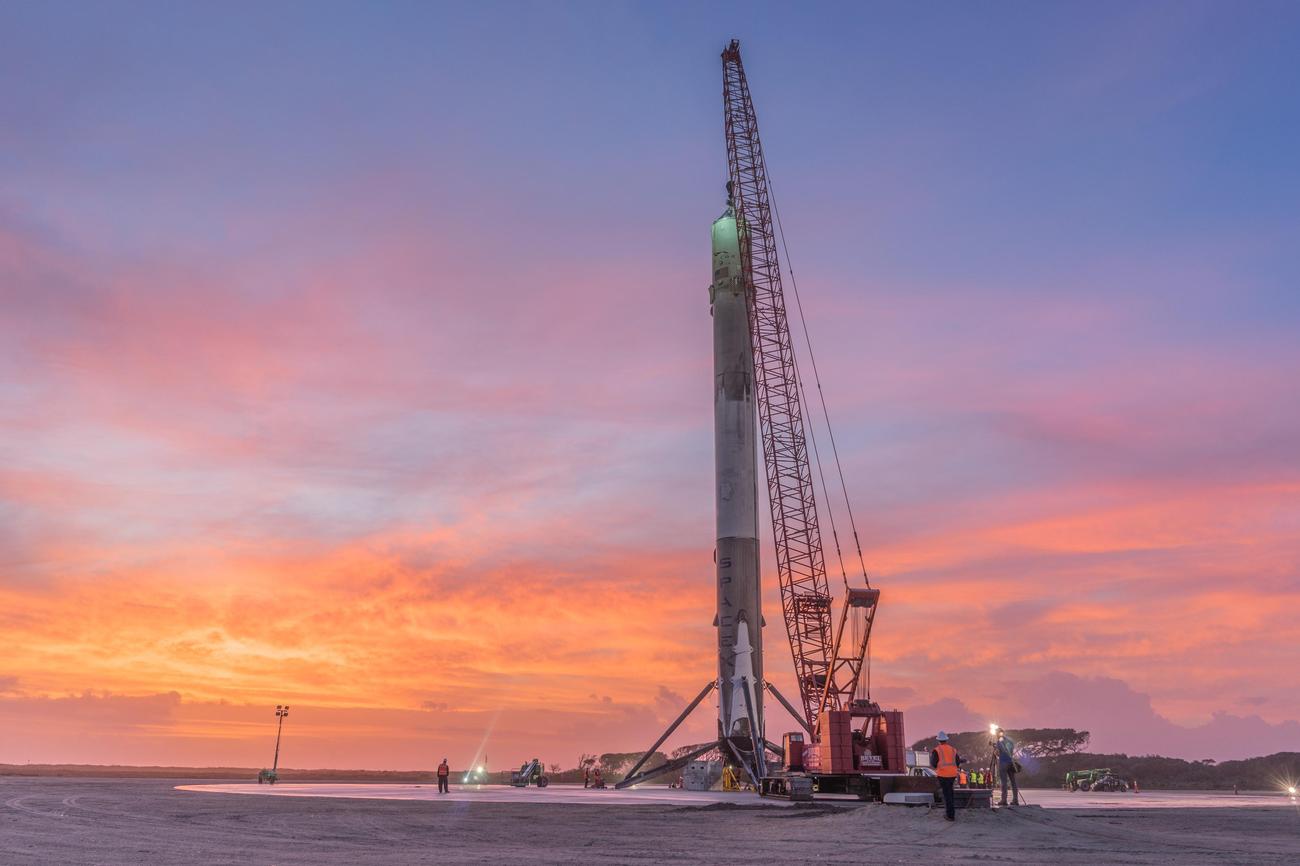Prepare to embark on a voyage through the captivating world of rocket chambers – the powerhouses that propel us beyond the boundaries of Earth. In this article, we will delve into the realm of fascinating facts about these enigmatic components that drive space exploration forward. As a seasoned aerospace engineer with a deep understanding of propulsion systems, I am delighted to share my expertise and shed light on the intriguing science behind rocket chambers. Get ready to discover the secrets behind their design, testing, and optimization, as we unveil the mysteries and unveil the incredible potential hidden within these remarkable devices.

Facts About the Rocket Chamber
The rocket chamber is a critical component of space vehicles, responsible for generating the immense thrust required to launch a rocket into space. Let’s explore some fascinating facts about rocket chambers and the science behind them.
The Heart of Propulsion: Combustion Chamber
At the heart of a rocket’s propulsion system lies the combustion chamber. This cavity is where the magic happens, where fuel and oxidizer combine to produce the high temperatures and pressures necessary for thrust generation. In a liquid-propellant rocket, the fuel, usually kerosene or liquid hydrogen, is mixed with the oxidizer, usually liquid oxygen, inside the combustion chamber. As they ignite, an intense chemical reaction occurs, propelling the rocket forward.
“The combustion chamber is where fuel and oxidizer come together in a fiery dance, unleashing the power needed to break free from Earth’s gravity.”
The Nozzle: Accelerating the Flow
Once combustion occurs within the rocket chamber, the resulting hot gases need an exit path. This is where the nozzle comes into play. Located at the lower end of the rocket, the nozzle serves to direct the flow of exhaust gases and accelerate them. By tapering outwards, the nozzle increases the velocity of the gases, obeying the laws of fluid dynamics. This increased velocity generates a force in the opposite direction, propelling the rocket forward.
“The nozzle is like a carefully crafted funnel, transforming hot exhaust gases into a mighty jet blast, propelling the rocket with incredible force.”
Solid Fuel: The Combustion Chamber Within
In some rockets, such as those that utilize solid fuels, the combustion chamber takes on a slightly different form. In these cases, the cylindrical hole within the solid propellant itself acts as the combustion chamber. As the solid fuel-oxidizer mixture ignites, combustion occurs within this confined space.
“In rockets with solid propellant, the very structure of the fuel itself becomes the combustion chamber, creating controlled chaos from within.”
Choking the Throat: Controlling Thrust
In a solid propellant rocket, the hot exhaust gases reach a point of constriction known as the throat. This narrow section dictates the amount of thrust produced. By carefully designing the geometry of the nozzle, engineers can control the flow of gases and optimize thrust. Strategic considerations must be taken to ensure the throat does not become overly choked, restricting the flow of exhaust gases and reducing overall rocket efficiency.
“By precisely tuning the throat of a solid propellant rocket, propulsion engineers unlock the perfect balance between power and efficiency.”
Unlocking Boundless Potential
Rocket chambers are not just containers for combustion; they are the gatekeepers to the realm of space exploration. By harnessing the power of chemical reactions and fluid dynamics, these intricate components transform humble propellants into mighty forces for unlocking the mysteries of the universe. From the fiery depths of the combustion chamber to the carefully crafted geometry of the nozzle, rocket chambers lay the foundation for mankind’s extraterrestrial endeavors.
“Rocket chambers embody the marvels of engineering and physics, enabling us to transcend the boundaries of Earth and embark on an awe-inspiring journey among the stars.”
—
Table: Comparing Liquid and Solid Propellant Rockets
| Liquid Propellant Rocket | Solid Propellant Rocket | |
|---|---|---|
| Fuel | Kerosene or Liquid Hydrogen | Solid Fuel (Mixture) |
| Oxidizer | Liquid Oxygen | Fuel and Oxidizer within solid propellant |
| Combustion Process | Fuel and oxidizer mix and burn within combustion chamber | Fuel-oxidizer mixture ignites within the solid propellant itself |
| Thrust Control | Nozzle shape and geometry control thrust | Throat constriction within solid propellant controls thrust |
| Flexibility | Allows for more precise control and adjustments during flight | Less flexibility once solid propellant is ignited |
| Examples | SpaceX Falcon 9 | Space Shuttle Solid Rocket Booster |
—
The rocket chamber embodies the culmination of decades of scientific research and engineering expertise. With its complex interplay of combustion, fluid dynamics, and propulsion principles, understanding the rocket chamber’s intricacies is crucial for the success of space missions. Whether it’s the combustion chamber igniting a fiery reaction or the nozzle accelerating the flow, each element plays a key role in propelling rockets beyond Earth’s atmosphere. So next time you gaze at the night sky and witness a rocket’s ascent, remember the profound science happening within its rocket chamber, leading humanity’s exploration of the cosmos.
“Within the rocket chamber lies the heart of propulsion, unfolding the secrets of the universe and propelling us towards the stars.”
Here’s an example of an active internal link using Hugo syntax:
{{< p >}}
Curious about the latest facts about the rocket? Look no further! Our team has compiled a comprehensive list of intriguing details and mind-blowing discoveries. From cutting-edge technology to astonishing capabilities, you won’t want to miss out on these remarkable insights. Explore our insightful collection here and prepare to be amazed.
{{< /p >}}
Facts About the Rocket Chamber
Here are some mind-blowing facts about the rocket chamber that will leave you in awe! Did you know that the temperature inside a rocket chamber can reach up to 6,000 degrees Fahrenheit? Yes, you read that right, 6,000 degrees! This extreme heat is generated by the combustion of fuel and oxidizer, creating a powerful force that propels the rocket into space.
But wait, there’s more! Not only does the rocket chamber withstand such extreme temperatures, but it also undergoes numerous design iterations to optimize its efficiency. Engineers and scientists work tirelessly to enhance the rocket chamber design, ensuring it can handle the intense conditions of space travel.
Speaking of advancements, the field of rocket chamber technology has seen remarkable progress over the years. With advancements in materials and manufacturing techniques, rocket chambers have become lighter, more durable, and capable of generating higher thrust. These breakthroughs have paved the way for safer and more efficient space exploration.
Now, if you’re as fascinated by rocket chamber facts as we are, make sure to check out some in-depth articles on this subject. Learn more about rocket chamber facts, explore the intricacies of rocket chamber design, and discover the latest advancements in this incredible field. Click on the following links to satisfy your curiosity:
Get ready to embark on a journey through the wonders of rocket chamber technology. Click on the links above and prepare to be amazed!
How Rockets Make Space Exploration Possible
[youtube v=”jI-HeXhsUIg”]
Rocket Science: Understanding the Basics
Rocket Science: How Rockets Work – A Short and Basic Explanation
Rockets have played a crucial role in space exploration for decades, enabling mankind to transcend the boundaries of Earth. These tall cylindrical metallic tubes are responsible for launching payloads into space and have become an essential part of our multi-billion dollar space industry.
What is a Rocket and How Does It Work?
A rocket is a long, thin metallic cylinder with a pointed nose that shoots up from the ground, leaving a gigantic cloud of smoke in its wake. But there is so much more to a rocket than meets the eye.
The frame of a rocket is similar to that of an airplane and is made of light yet strong materials like aluminum and titanium. The rocket is covered with a thermal protection system to withstand extreme heat caused by air friction and maintain the cold temperatures needed for certain fuels and oxidizers. Within the rocket’s frame, different sections serve specific purposes.
The Components of a Rocket
- Payload System: This refers to the rocket’s carrying capacity, which depends on the mission it is designed for. The payload can include cargo, satellites, space probes, or even spacecraft carrying humans.
“The payload system of a rocket determines its carrying capacity, whether it’s cargo, satellites, or even spacecraft carrying humans.”
- Guidance System: This system ensures that the rocket stays on its intended trajectory. It includes on-board computers, sophisticated sensors, radar, and communication systems.
“The guidance system ensures that the rocket follows its intended path using computers, sensors, and communication systems.”
- Propulsion System: The majority of the rocket’s length is devoted to the propulsion system. It consists of components that launch the rocket off the ground and propel it in a specific direction.
“The propulsion system is responsible for launching the rocket and propelling it in the desired direction.”
How Does a Rocket Overcome Earth’s Atmosphere?
In order to reach space, a rocket must overcome the thick layers of Earth’s atmosphere. To achieve this, the rocket must gain incredible speed to surpass the atmospheric resistance. This is where Newton’s third law of motion comes into play.
Newton’s third law states that every action has an equal and opposite reaction. When a rocket engine burns fuel in the presence of an oxidizer, it generates a great deal of mass that is expelled at high speed through bell-shaped nozzles at the bottom of the rocket. As the rocket pushes the exhaust down, the exhaust responds by pushing the rocket up.
“According to Newton’s third law of motion, a rocket engine propels the rocket by expelling hot gases at high speeds, resulting in an upward thrust.”
The Gravity Turn and Rocket Flight Maneuvers
During a rocket launch, you may have noticed that the rocket doesn’t maintain a straight trajectory all the way up. After lifting off vertically, the rocket starts turning and going laterally. This flight maneuver is known as the gravity turn and offers two key benefits.
First, the gravity turn uses gravity to steer the rocket onto its desired trajectory, saving rocket fuel. Second, it helps minimize aerodynamic stress on the launch vehicle. If the rocket continued going straight up, it would run out of fuel. By tilting slightly, the rocket can conserve fuel and maintain a more efficient flight path.
“During a rocket launch, the gravity turn maneuver optimizes fuel consumption and reduces aerodynamic stress on the rocket, ensuring an efficient flight.”
Separation and the Purpose of Rockets
Once a rocket has fulfilled its purpose of launching the payload into space, it is separated and parts are jettisoned at pre-defined intervals. For example, when launching a spacecraft, the rocket boosters and external tank separate first, followed by the maneuvering of the spacecraft using its own engines. Similarly, if launching an unmanned satellite, the rocket’s sole purpose is to secure the satellite in its intended orbit.
“Rockets are used solely to get payloads into space. Once the payload is deployed, the rocket is no longer needed.”
Rockets have been the driving force behind our understanding and exploration of space. They have made it possible for us to send not only satellites and space probes but also humans beyond Earth’s boundaries. Without these impressive machines, our knowledge and exploration of space would be significantly limited.
Note: A table providing a comparison between liquid and solid propellant rockets can be added if desired.
FAQ
Question: How does a rocket chamber work?
Answer: A rocket chamber works by enclosing a gas under pressure, such as a combination of fuel and oxidizer. The propellants burn inside the combustion chamber, generating high temperatures and pressures. The hot exhaust gas then escapes through the nozzle, producing thrust.
Question: What types of propellants are used in rocket chambers?
Answer: Rocket chambers typically use either liquid propellants or solid fuel-oxidizer mixtures. In liquid-propellant rockets, commonly used propellants are kerosene or liquid hydrogen as the fuel, and liquid oxygen as the oxidizer. In solid-propellant rockets, the propellant mixture itself acts as the combustion chamber.
Question: How does the hot exhaust in a rocket chamber produce thrust?
Answer: The hot exhaust gas from the rocket chamber is passed through a nozzle. As the exhaust expands through the nozzle, it accelerates the flow and creates a high-speed jet of gases moving in one direction. This action follows Newton’s third law of motion, resulting in an equal and opposite force known as thrust that propels the rocket forward.
Question: What is the role of the combustion chamber in a rocket?
Answer: The combustion chamber in a rocket is where the propellants burn and generate high temperatures and pressures. Its primary function is to provide a controlled environment for combustion to occur, ensuring efficient utilization of the propellant and generating the required thrust for propulsion.
Question: How is the thrust of a rocket determined?
Answer: The thrust of a rocket is determined by various factors, including the design of the rocket chamber and nozzle. In a solid propellant rocket, the amount of thrust is dictated by the throat of the cylindrical hole in the propellant. For liquid propellant rockets, the thrust is influenced by factors such as the combustion efficiency, chamber pressure, and nozzle configuration.
- China II Review: Delicious Food & Speedy Service - April 17, 2025
- Understand Virginia’s Flag: History & Debate - April 17, 2025
- Explore Long Island’s Map: Unique Regions & Insights - April 17, 2025
















